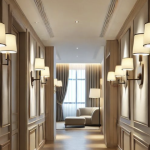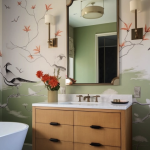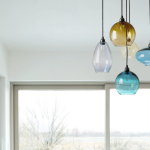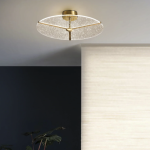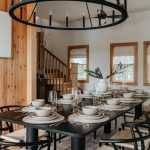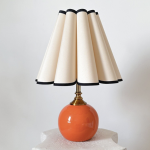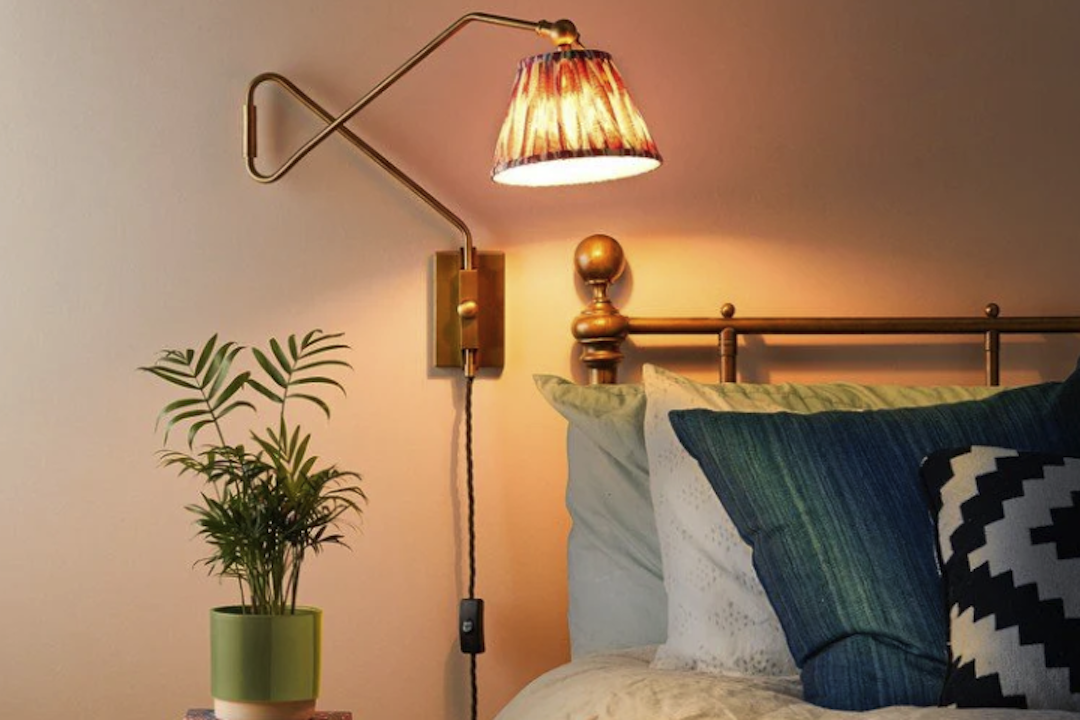
Decorative wall lights have emerged as a pivotal element in modern interior design, transcending their functional role to become integral components of aesthetic expression. These fixtures not only illuminate spaces but also serve as artistic statements that can transform the ambiance of a room. From sleek, contemporary designs to ornate, vintage-inspired pieces, wall lights offer a plethora of options that cater to diverse tastes and styles.
Their versatility allows them to be used in various settings, from residential homes to commercial spaces, enhancing both functionality and visual appeal. The evolution of wall lighting has been influenced by advancements in technology and design trends. With the advent of LED technology, wall lights have become more energy-efficient and longer-lasting, allowing for innovative designs that were previously unattainable.
This shift has opened up new avenues for creativity, enabling designers to experiment with shapes, materials, and colors. As a result, decorative wall lights are no longer mere sources of illumination; they are now essential elements that contribute to the overall character and mood of a space.
Choosing the Right Wall Lights for Your Space
Selecting the appropriate wall lights for a given area requires careful consideration of several factors, including the room’s purpose, size, and existing decor. For instance, in a cozy reading nook, wall sconces with adjustable arms can provide focused light while adding a touch of elegance. Conversely, in a hallway or entryway, broader fixtures that cast light upwards or downwards can create a welcoming atmosphere.
Understanding the function of the space is crucial in making an informed choice that balances aesthetics with practicality. Another important aspect to consider is the style of the wall lights in relation to the overall decor theme of the room. A minimalist space may benefit from sleek, geometric fixtures that complement clean lines, while a more eclectic environment might call for bold, artistic designs that serve as conversation starters.
Additionally, color plays a significant role; warm tones can create an inviting ambiance, while cooler hues may lend a more modern feel. By harmonizing the wall lights with the existing decor, one can achieve a cohesive look that enhances the overall design narrative.
Installation and Placement Tips for Wall Lights
Proper installation and placement of wall lights are essential for maximizing their effectiveness and ensuring safety. When determining the height at which to install wall sconces, a general guideline is to position them at eye level, typically between 60 to 72 inches from the floor. This height not only provides optimal illumination but also ensures that the fixtures are visually appealing and accessible.
In spaces with varying ceiling heights or furniture arrangements, adjustments may be necessary to maintain balance and proportion. Placement is equally important; wall lights should be strategically positioned to highlight architectural features or artwork while avoiding glare or harsh shadows. For instance, placing sconces on either side of a mirror can enhance its reflective qualities and create a sense of depth in the room.
In dining areas, wall lights can be used to frame the table setting, providing both functional lighting and an elegant touch. Additionally, considering the direction of light is crucial; fixtures that direct light upwards can create an ambient glow, while downward-facing lights can provide task lighting for specific activities.
Types of Decorative Wall Lights
The variety of decorative wall lights Rcc24 available on the market is vast, catering to different styles and preferences. Sconces are among the most popular types; they come in various designs ranging from traditional candle-style sconces to modern LED fixtures. These versatile pieces can be used in pairs or as standalone accents, making them suitable for any room in the house.
For example, in a living room, a pair of sconces flanking a piece of artwork can draw attention to the art while providing soft illumination. Another category includes wall-mounted fixtures that combine functionality with design. These may include swing-arm lamps that allow for adjustable lighting or integrated shelves that serve dual purposes.
Such designs are particularly useful in smaller spaces where maximizing utility is essential. Additionally, there are decorative wall lights that incorporate unique materials such as glass, metal, or wood, each contributing distinct textures and visual interest to a room. The choice of material can significantly influence the overall aesthetic; for instance, glass fixtures may evoke a sense of elegance and sophistication, while wooden designs can add warmth and rustic charm.
Using Wall Lights to Create Ambiance
Wall lights play a crucial role in setting the mood within a space. The type of light emitted—whether warm or cool—can dramatically alter the atmosphere of a room. Warm white light tends to create an inviting and cozy environment, making it ideal for living rooms and bedrooms where relaxation is key.
In contrast, cooler tones can evoke a sense of energy and focus, making them suitable for workspaces or kitchens where clarity is essential. Layering light is another effective strategy for creating ambiance with wall lights. By combining wall sconces with other light sources such as overhead fixtures and table lamps, one can achieve a balanced lighting scheme that enhances depth and dimension.
For example, in a dining room, wall sconces can provide ambient lighting while a chandelier above the table offers focused illumination for meals. This layered approach not only improves functionality but also adds visual interest by creating varying levels of light throughout the space.
Creative Ways to Incorporate Wall Lights into Your Decor
Wall Lights as Art Pieces
Unique designs or custom-made fixtures can serve as focal points within a room, drawing attention and sparking conversation. For instance, an oversized geometric sconce can become a statement piece in an entryway or living room, showcasing both style and functionality.
Highlighting Specific Areas
Another creative method involves using wall lights to highlight specific areas or features within a space. For example, installing sconces above bookshelves can illuminate your collection while adding an element of sophistication.
Accentuating Architectural Details
Accentuating architectural details such as crown molding or textured walls with strategically placed wall lights can enhance their visual appeal. This technique not only showcases design elements but also creates an inviting atmosphere that encourages exploration and appreciation of the space.
Maintenance and Care for Wall Lights
Maintaining decorative wall lights is essential for ensuring their longevity and continued aesthetic appeal. Regular cleaning is necessary to prevent dust accumulation and maintain brightness. Depending on the material of the fixture, different cleaning methods may be required; for instance, glass sconces can be wiped down with a soft cloth and glass cleaner, while metal fixtures may need polishing with appropriate cleaners to avoid tarnishing.
Additionally, it is important to periodically check the electrical components of wall lights to ensure safety and functionality. This includes inspecting wiring for any signs of wear or damage and replacing bulbs as needed. Using energy-efficient LED bulbs not only reduces maintenance frequency but also contributes to lower energy costs over time.
By taking these steps to care for wall lights, homeowners can enjoy their beauty and functionality for years to come.
Enhancing Your Space with Decorative Wall Lights
Decorative wall lights offer an exceptional way to enhance both the functionality and aesthetic appeal of any space. With their diverse styles and applications, they provide opportunities for creativity while fulfilling practical lighting needs. By carefully selecting the right fixtures, considering placement and installation tips, and maintaining them properly, individuals can create inviting atmospheres that reflect their personal style.
The integration of wall lights into interior design goes beyond mere illumination; it allows for storytelling through light and shadow. Whether used to highlight artwork or create cozy reading nooks, these fixtures play an essential role in shaping the ambiance of our environments. As trends continue to evolve and technology advances further, decorative wall lights will undoubtedly remain a staple in contemporary design practices.

